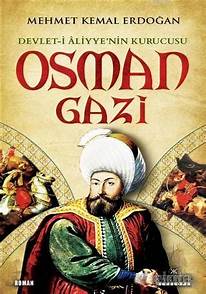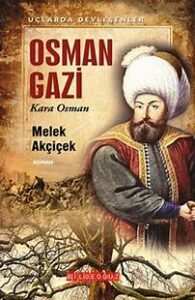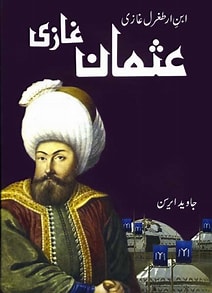Usman Ghazi Turkish drama
5 min read
The historical backdrop of Turkish
The historical backdrop of Turkish dramatizations is a fascinating excursion that traverses quite a few years, exhibiting. The development and notoriety of Turkish television series both locally and globally. Here is an outline of the critical achievements throughout the entire existence of Turkish dramatizations:
Early years (1960s-1990s):
Turkish television shows originally arose during the 1960s, yet they were restricted in scope and generally humble creations. During the 1980s and 1990s, the fame of Turkish shows developed, fundamentally inside Turkey and other adjoining nations in the Center East.

Worldwide extension (2000s):
The mid-2000s denoted a defining moment for Turkish shows when they started to procure more basic global recognition, particularly in the Center East and Focal Asia. Shows like “Noor”, “Prohibited Love”, and “Eminent 100 years” accomplished far and wide fame in various nations, spreading the Turkish show peculiarity past the nation’s lines.
Ascent of Turkish series in Latin America (2010s):
During the 2010s, Turkish shows encountered a flood in prominence in Latin American nations, especially in Chile, Argentina, and Colombia. Shows like “1,000 and One Evenings” and enamored Latin American crowds and opened up new business sectors for Turkish substance.
Latest things:
lately, Turkish shows have kept on acquiring fame all over the planet. They have been especially fruitful in the Center East, Focal Asia, and Latin America, where they have turned into a social peculiarity. Turkish shows are known for their high creation values, holding storylines, and alluring cast individuals. They offer crowds a brief look into Turkish culture and history, and they frequently manage social, and policy driven issues in a touchy and nuanced way.
The eventual fate of Turkish shows:
Almost certainly, Turkish dramatizations will keep on filling in fame in the years to come. They offer an extraordinary mix of diversion and training, and they appeal to a great many crowds. As Turkish culture and impact keeps on spreading, so too will the ubiquity of Turkish shows.
Usman Ghazi
Usman Ghazi embraced Islam at an early age and was one of the earliest believers to the confidence. He assumed huge parts in the early Islamic people group and procured the title of “Ghazi,” and that signifies “triumphant”. In Arabic, because of his dauntlessness and commitments to Islamic development during the Prophet Muhammad’s lifetime. Usman Ghazi was the third caliph of Islam, succeeding Umar ibn al–Khattab in 644 CE. His caliphate went on for a very long time until his passing in 656 CE.

During Usman’s standard, the Islamic domain extended essentially, coming to the extent that Persia (current Iran) and North Africa. He likewise assumed a urgent part in gathering the Quran into a solitary book, as it exists today. Be that as it may, his caliphate was likewise set apart by certain contentions, including his authoritative choices. And charges of nepotism towards his Umayyad family, which in the long run prompted contradiction. And turmoil among specific fragments of the Muslim people group.
The discontent finished in a defiance that brought about Usman’s passing because of renegades who blockaded his home in Medina. In spite of the discussions encompassing his standard, Usman is seen as a regarded figure in Islamic history, and his reign is viewed as a critical period in the early improvement of the Muslim people group.

Noticing that the expression “Ghazi” is all the more usually connected with early Muslim heroes who battled for Islam. And it is at times utilized as an honorific title for the people who took part in fights for the faith is significant. Be that as it may, on account of Usman Ghazi, the term is fundamentally use to signify his accomplishments and bravery during his lifetime.
Usman Ghazi, the third caliph of the Rashidun Caliphate, ruled from 644 CE to 656 CE. His caliphate was marke by a number of significant events and challenges.
Military victories and expansion:
During Usman’s rule, the Islamic realm continued to expand, and Muslim armies won victories in different regions, including parts of Persia (Iran) and North Africa.
Compilation of the Quran:
One of Usman’s most important achievements was the compilation of the Quran into a single book. He ordered the collection of the Quranic verses into a single written form to prevent any discrepancies in the oral transmission. This compilation played a vital role in preserving the Quran intact.
Administrative changes:
Usman implemented a number of administrative changes in the rapidly growing Islamic state to improve governance and ensure a fair distribution of resources. However, some of his decisions were criticize, and allegations of nepotism and favoritism emerged.

As the Islamic realm grew larger and more diverse, factionalism and dissent arose among certain segments of the population. Opposition to Usman’s rule grew, largely fueled by complaints against some of his appointed officials and governors.
Rebellion and death:
The discontent and opposition to Usman’s rule culminated in a rebellion led by a group of disgruntled people. In 656 CE, they attacked his home in Medina, resulting in his death. This event marked the first instance of internal conflict and strife within the Muslim community.
Aftermath and succession:
Following Usman’s death, Ali ibn Abi Talib, the cousin and son-in-law of the Prophet Muhammad, became the fourth caliph. Usman’s died led to further divisions within as Muslim community and eventually contributed to the First Fitna, a time of civil battle and political turmoil.
It is necessary to note that the actual records of Usman Ghazi’s law may vary, plus some details may be dependent on different translations based on the sources available. However, the events and challenges mentioned above represent some of the significant occurrences that took place during his tenure as the caliph of the Rashidun Caliphate.
Wars:
One of the critical fights battled by Osman Ghazi was the Skirmish of Bapheus in 1302, where his powers conflicted with the Byzantine Domain. The Ottomans got a conclusive triumph, which further reinforced their situation and expanded their regional possessions.

Following the passing of Osman Ghazi, his child Orhan Ghazi succeeded him as the leader of the growing Ottoman Domain. Under Orhan’s authority, the Ottomans proceeded with their regional extension, overcoming more grounds and posts.





